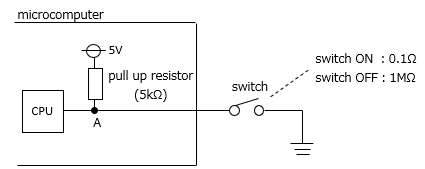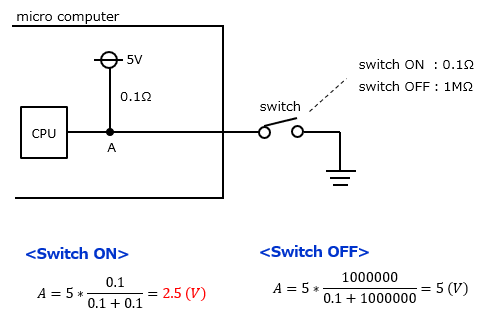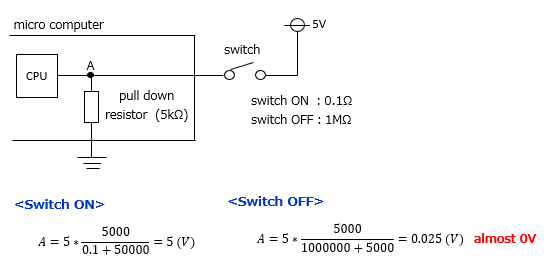What are pull-up/pull-down resistors? |
|||||||
・Freewheeling Diode ・Alternating current ・Termination resistor ・CPU, LSI, IC, ASIC ・Adders, Subtractors ・H-bridge circuit ・Motor type ・Inverter ・AC-DC converter ・DC-DC converter ・Transformer ・ROM, RAM, register, cash ・open/short circuit failures ・Low-side, high-side driver ・Mechanism of electric shock ・Zener diode ・Rectifier circuit ・Pull up/down resistor ・Joule heat ・Solenoid valves, relays ・Comparator |
■What are pull-up/pull-down resistors?
A pull-up resistor/pull-down resistor is a resistor that is set to obtain a stable voltage between terminals and circuits. It is used to determine the ON/OFF state of switches and accurately detect sensor values.
■Pull-up resistor
■Pull-down resistor
The pull-down resistor is attached to the ground side as shown below, and the voltage of A is set to 0 when the switch is turned off.
Like the pull-up resistor, the pull-down resistor also has the role of stabilizing the voltage. ■How to properly use pull-up and pull-down resistorsBoth pull-up and pull-down resistors can be used to detect the voltage of the connected device. As for how to use it properly, it is decided whether it is better to keep it LOW (0V) or HIGH (5V in this case) in the event of a disconnection failure. (Pull-down resistor if you want to keep it LOW)
|
|
|||||




